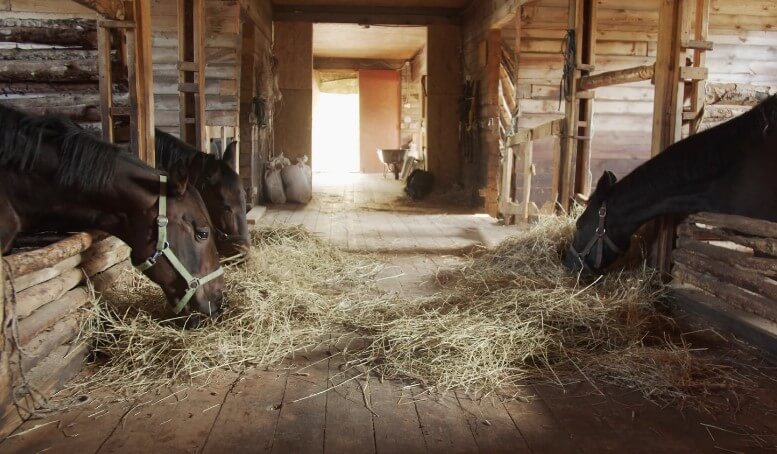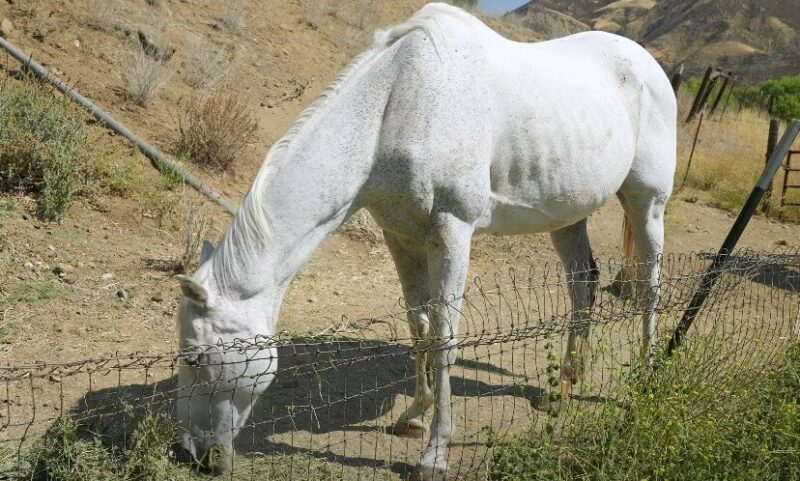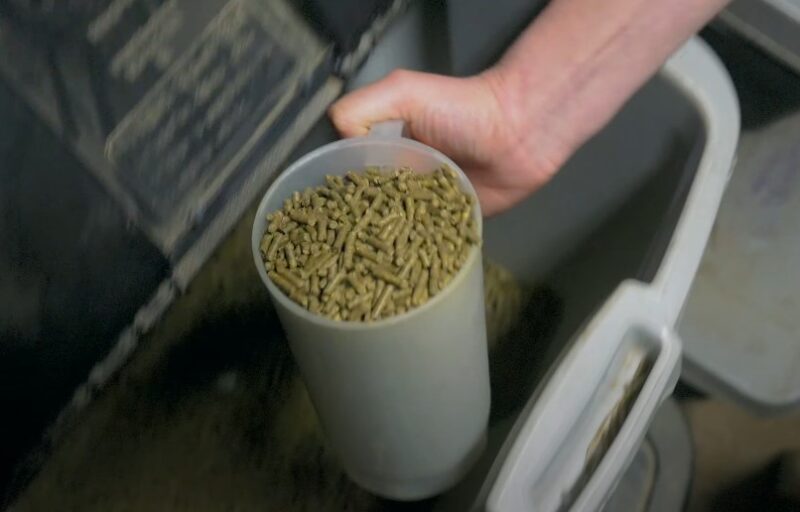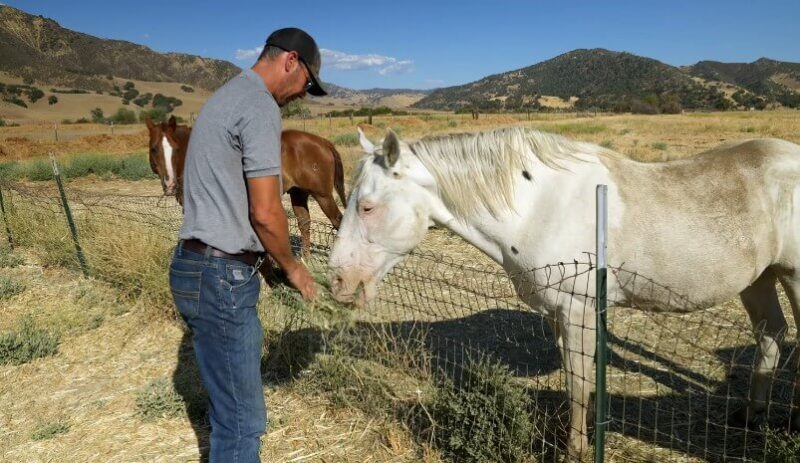
-
Nancy Nixon
- Published:
- Updated: July 30, 2025
- Category: Pet Diet and Nutrition
Share Post:
Maintaining a healthy weight in horses is not a one-size-fits-all process. The most effective approach is grounded in forage-based nutrition, regular condition scoring, and precise control of calorie intake.
The concrete answer: to keep a horse at an ideal weight, prioritize high-quality roughage, eliminate excess starch and sugar, adjust portions according to the horse’s actual energy use, and monitor their body condition score (BCS) monthly.
Dietary plans should be adapted seasonally and based on whether the horse is in light work, moderate training, or not working at all. The aim is not to feed for maximum output, but for metabolic balance and digestive health.
What Is a Healthy Weight in Horses?
Horse weight cannot be judged by the number on a scale alone. The Body Condition Score (BCS) system is the most reliable method used globally. It assesses fat coverage at key areas of the horse’s body—ribs, withers, neck, shoulder, back, and tailhead.
| BCS | Interpretation | Visible Indicators | Action |
| 1–3 | Underweight | Ribs and spine visible, no fat coverage, poor topline | Increase energy with safe calories and forage |
| 4–5 | Healthy / Ideal | Ribs felt but not seen, rounded appearance over the topline | Maintain current routine, adjust as seasons change |
| 6 | Slightly Overweight | Slight rib coverage, soft fat around the tailhead | Slight feed reduction, begin gentle exercise |
| 7–9 | Overweight to Obese | Ribs difficult or impossible to feel, thick neck, and fat deposits | Major dietary adjustment, low-carb forage, vet input |
Horses in active training may remain healthy with a BCS closer to 4, while pasture-kept horses often do better at 5. Keeping BCS within range ensures performance horses stay athletic without risking metabolic dysfunction, and older horses remain strong without tipping into obesity.
Forage First: The Foundation of a Healthy Diet

At the core of every effective equine diet is forage—hay or pasture. Horses evolved as grazing animals and require 1.5% to 2.5% of their body weight in dry forage per day, depending on metabolism, workload, and weather. The quality of this forage matters more than quantity.
| Horse Type | Ideal Forage Intake (Dry Matter) | Example for a 500 kg Horse |
| Easy Keeper (Low Work) | 1.5–1.8% BW | 7.5–9 kg per day |
| Average Metabolism | 2.0% BW | 10 kg per day |
| Hard Keeper (High Work) | 2.2–2.5% BW | 11–12.5 kg per day |
A 2019 study published in the Journal of Equine Veterinary Science showed that horses fed ad-libitum hay adjusted their intake naturally when forage was low in energy density, avoiding weight gain—highlighting the role of hay type and not just volume.
Good-quality grass hay should be the base. Avoid hay that’s overly mature or stemmy, as it’s less digestible. For horses needing to lose weight, switch to low-NSC (non-structural carbohydrate) hay like late-cut timothy, and soak it in water to further reduce sugar content. Horses that struggle to maintain weight should receive more digestible hays such as alfalfa or a soft orchardgrass.
Concentrates: Use With Precision

Concentrated feeds, or “grain,” should never form the majority of the diet unless the horse has high energy demands from intense work. For most leisure and pasture horses, commercial grain mixes are unnecessary and often harmful.
When concentrates are needed:
- Choose feeds with low starch and sugar content (look for NSC below 12%)
- Avoid corn and molasses-based mixes
- Use pelleted or extruded senior feeds for horses with dental issues
- Always match the calorie content with the actual workload
A 9-year-old Thoroughbred in moderate training for eventing began losing topline and energy midway through the season.
Instead of increasing sweet feed, the barn manager switched to a low-NSC, high-fat performance pellet combined with soaked beet pulp and maintained free-choice timothy hay.
Over 6 weeks, the horse regained condition and performance without the behavioral “spikes” often caused by sugary feeds.
The Role of Horse Nutrition: Balance, Not Excess
Horse nutrition is about delivering balanced energy without overloading the digestive system or pushing the horse toward metabolic imbalance. This means ensuring that micronutrient needs (vitamins and minerals) are met even when calorie intake is being restricted. Common deficiencies in overweight horses include magnesium, copper, and selenium—particularly when feeding hay-only diets.
| Key Nutrient | Why It Matters | Sources |
| Magnesium | Supports insulin sensitivity, muscle health | Balancers, supplements, forage |
| Copper & Zinc | Crucial for coat, hooves, and immunity | Balancers, fortified feeds |
| Selenium | Antioxidant, supports muscle recovery | Region-dependent; often needs supplement |
| Omega-3s | Reduces inflammation, supports coat health | Flaxseed, chia, stabilized oils |
Including a balancer pellet or loose supplement that provides these in proper ratios is often necessary, especially when feeding low-calorie forage to overweight horses.
Weight Gain: Doing It Safely
View this post on Instagram
For horses that need to gain weight, increasing grain is not the safest solution. Focus on boosting forage digestibility and adding safe fat sources:
- Feed free-choice high-quality hay or add alfalfa
- Add soaked beet pulp or hay pellets for digestible fiber
- Use vegetable oils, rice bran, or ground flaxseed to add calories
- Introduce weight gain gradually over several weeks
A 22-year-old Arabian mare with dental wear was dropping weight despite a full hay net. By soaking hay cubes, adding flax oil and a senior mash, and switching to a soft alfalfa-timothy blend, her BCS moved from 3.5 to 4.8 in two months without stress or excess grain use.
Weight Loss: Restrict Without Starving
For horses needing to lose weight, starvation is not the answer. Severe feed restriction leads to stress and potential health issues like hyperlipemia. Instead:
- Feed 5% of the ideal body weight in low-calorie forage
- Soak hay to reduce water-soluble carbohydrates
- Eliminate all grain and treats high in sugar
- Provide a low-calorie balancer to prevent deficiencies
- Increase turnout and add exercise where possible
Exercise, even 20 minutes of brisk walking daily, can make a major difference. Horses should not lose more than 1% of their body weight per week to avoid metabolic disruption.
Common Feeding Mistakes to Avoid

| Mistake | Consequence |
| Feeding by volume, not weight | Inaccurate calorie delivery |
| Too much grain, too little hay | Digestive upset, obesity, ulcers |
| Ignoring forage quality | Nutrient imbalances, poor coat, and hoof condition |
| Lack of regular body condition checks | Missed the early signs of weight changes |
| Over-supplementing without testing | Can cause toxicity or nutrient imbalances |
Seasonal Adjustments and Monitoring
Horses’ caloric needs shift with seasons. In winter, cold weather increases maintenance energy needs by 10–20%, especially in unclipped or outdoor-kept horses. In summer, pastures may be lush and high in sugar, requiring controlled grazing to avoid laminitis.
Use tools like:
- Girth tape measurements every month
- Body condition score logbooks
- Pasture rotation and grazing muzzles in spring
- Slow-feed hay nets in winter
These practical steps help you detect trends before they become problems and allow timely dietary changes.
Final Thoughts
Weight management in horses is not about adding or subtracting feed arbitrarily—it’s about feeding to the horse’s real needs, built on a base of good forage, balanced horse nutrition, and constant reassessment.
Whether you’re working with an easy keeper on a restricted pasture or a senior horse recovering from illness, the best approach is slow, consistent, and focused on whole-body health.
Keep the diet forage-first, limit starch, and ensure vitamins and minerals are balanced. With the right attention and data-driven adjustments, horses can maintain healthy weight and condition through every season and every stage of life.









